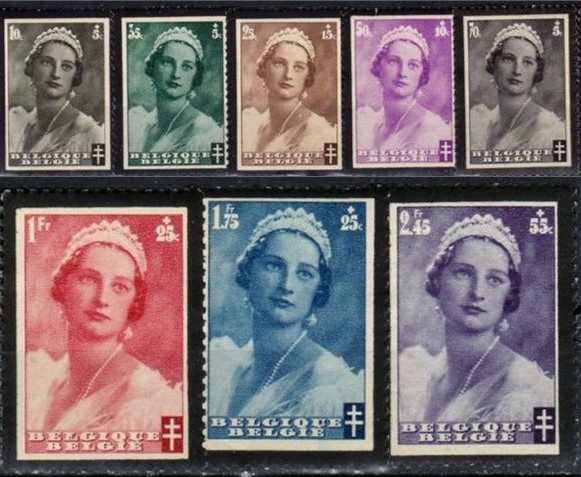The first time I saw one one these stamps I thought someone used a black marker to color the perforation. The truth is quite different. The black edges signify that these are mourning stamps. These stamps were issued after a monarch or head of state passed away. You don't see these mourning stamps that often but there are some sets that were issued by Germany, Yugoslavia, Poland, Greece and Belgium that I have decided to show here
Germany: von Hindenburg
Paul Ludwig Hans Anton von Beneckendorff und von Hindenburg, known generally as Paul von Hindenburg (2 October 1847 – 2 August 1934), was a Generalfeldmarschall (field marshal) and statesman who commanded the German military during the second half of World War I before later being elected President of the Weimar Republic in 1925. He played a key role in the Nazi "Seizure of Power" in January 1933 when, under pressure, he appointed Adolf Hitler chancellor of a "Government of National Concentration", even though the Nazis were a minority in cabinet and the Reichstag.
Hindenburg remained in office until his death at the age of 86 from lung cancer at his home in Neudeck, East Prussia, on 2 August 1934. On August 1, Hitler had got word that Hindenburg was on his deathbed. He then had the cabinet pass the "Law Concerning the Highest State Office of the Reich," which stipulated that upon Hindenburg's death, the offices of president and chancellor would be merged under the title of Leader and chancellor (Führer und Reichskanzler)
Belgium: Astrid of Sweden
Astrid of Sweden (17 November 1905 – 29 August 1935) was Queen of the Belgians as the first wife of King Leopold III. By birth she was a princess of Sweden's royal House of Bernadotte. She was queen for less than two years, dying in a car accident at age 29
Greece: Constantine I and George II
Constantine I of Greece. Constantine I (Greek: Κωνσταντίνος Αʹ, Konstantínos I; 2 August [Old Style date. 21 July] 1868 – 11 January 1923) was King of Greece from 1913 to 1917 and from 1920 to 1922. He was commander-in-chief of the Hellenic Army during the unsuccessful Greco-Turkish War of 1897 and led the Greek forces during the successful Balkan Wars of 1912–1913, in which Greece expanded to include Thessaloniki, doubling in area and population. He succeeded to the throne of Greece on 18 March 1913, following his father's assassination.
He spent the last four months of his life in exile in Italy and died at 1:30 AM on January 11, 1923 at Palermo, Sicily of heart failure
George II (19 July 1890 (New Style date) – 1 April 1947) reigned as King of Greece from 1922 to 1924 and from 1935 to 1947.
He died of arteriosclerosis on 1 April 1947, after he was discovered unconscious in his room at the Royal Palace in Athens. When the news was announced some thought it to be an April Fool's Day joke.
Poland: Józef Klemens Piłsudski
Józef Klemens Piłsudski, (5 December 1867 – 12 May 1935) was a Polish statesman who served as the Chief of State (1918–22) and First Marshal of Poland (from 1920). He was considered the de facto leader (1926–35) of the Second Polish Republic as the Minister of Military Affairs. From World War I he had great power in Polish politics and was a distinguished figure on the international scene. He is viewed as a father of the Second Polish Republic re-established in 1918, 123 years after the 1795 Partitions of Poland by Austria, Prussia and Russia.
By 1935, unbeknownst to the public, Piłsudski had for several years been in declining health. On 12 May 1935, he died of liver cancer at Warsaw's Belweder Palace
Yugoslavia: Alexander Karađorđević
Alexander I (16 December 1888 [Old Style Calendar = 4 December] – 9 October 1934), also known as Alexander the Unifier served as a prince regent of the Kingdom of Serbia from 1914 and later became King of Yugoslavia from 1921 to 1934 (prior to 1929 the state was known as the Kingdom of Serbs, Croats and Slovenes). He was assassinated in Marseille, France, by Bulgarian terrorist Vlado Chernozemski during a state visit.







No comments:
Post a Comment